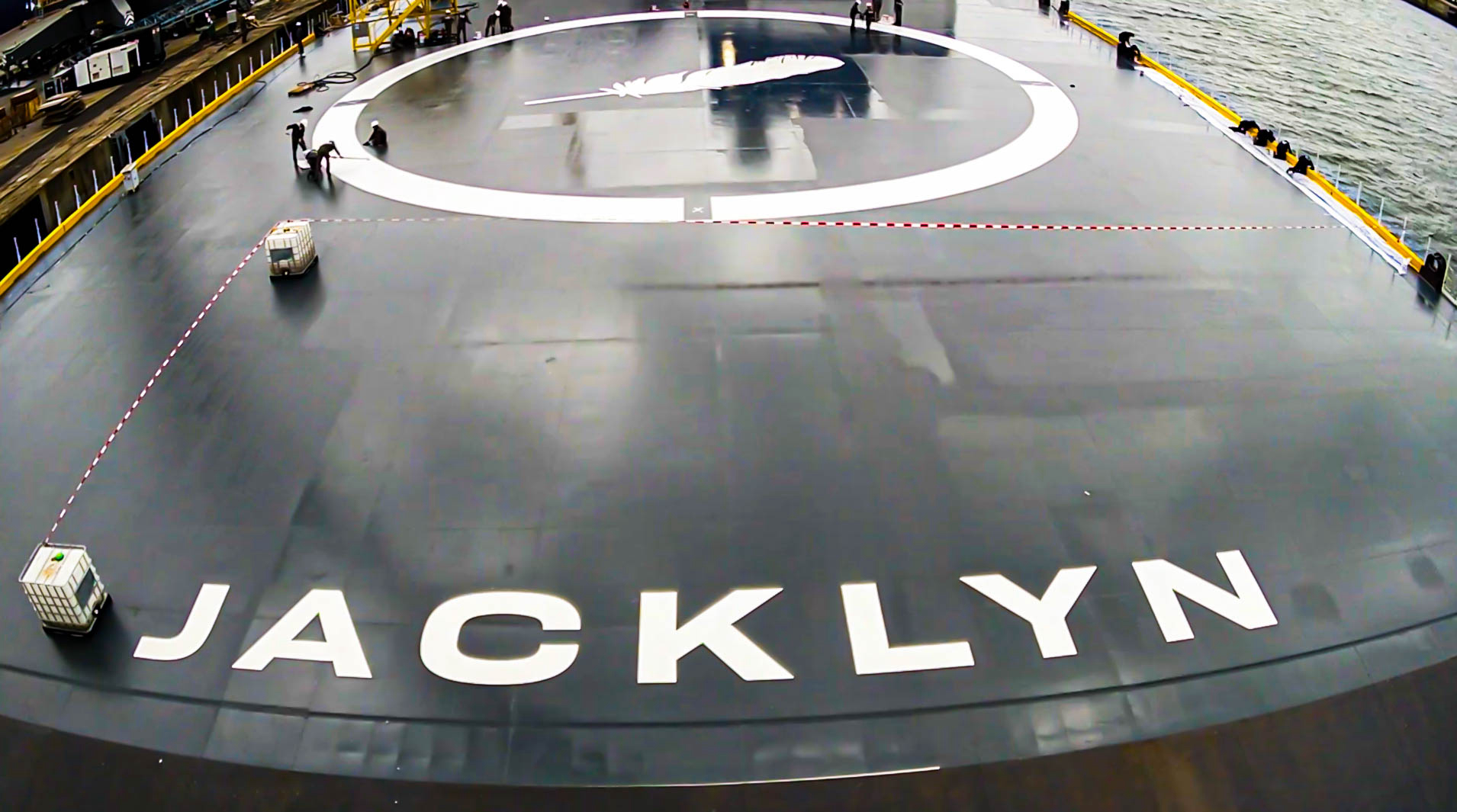Extra items are coming collectively for the first-ever flight of Blue Origin’s big New Glenn rocket.
That mission, scheduled to raise off on Oct. 13, will ship NASA’s twin ESCAPADE probes towards Mars from Cape Canaveral House Drive Station in Florida. It should additionally embrace a touchdown try by New Glenn’s first stage on a droneship named “Jacklyn,” which simply arrived at close by Port Canaveral to prep for the massive day.
“Welcome dwelling, Jacklyn. This sea-based touchdown platform is the place New Glenn’s reusable booster will return dwelling many times after every mission to rapidly refurbish for its subsequent flight,” Blue Origin stated right now (Sept. 4) in a publish on X, which included a video and photograph of the droneship.
Jacklyn is 380 toes lengthy and 150 toes large (116 by 46 meters), in response to House Offshore. It is named after the mom of Jeff Bezos, the billionaire founding father of Blue Origin. (“Jacklyn” is a nickname, nonetheless; the ship’s authorized moniker is “Touchdown Platform Vessel #1.)
Jacklyn is a brand new ship that was specifically designed to be a New Glenn touchdown platform, House Offshore studies. Building on the ship started in Romania final yr and wrapped up in Brest, France within the final month or so. Jacklyn departed Brest for Florida on Aug. 8.
The brand new ship will not be the primary to function a touchdown platform for orbital-class rockets, in fact: SpaceX operates a fleet of three droneships, which service launches from Florida’s House Coast and Vandenberg House Drive Base in California.
The SpaceX vessels are named “Simply Learn the Directions,” “Of Course I Nonetheless Love You” and “A Shortfall of Gravitas” — all nods to the works of legendary sci-fi writer Iain M. Banks.
Associated: Details about Blue Origin, Jeff Bezos’ spaceflight firm

A profitable New Glenn touchdown on Oct. 13 is a secondary goal; the primary objective is to get the 2 ESCAPADE (Escape and Plasma Acceleration and Dynamics Explorers) spacecraft, named Blue and Gold, safely on their method to Mars.
If all goes in response to plan, Blue and Gold will arrive in orbit across the Crimson Planet in September 2025. After a commissioning interval, the satellites will gather quite a lot of measurements quantifying Mars’ response to area climate, data that would assist scientists higher perceive how the planet’s local weather has modified over the eons.





